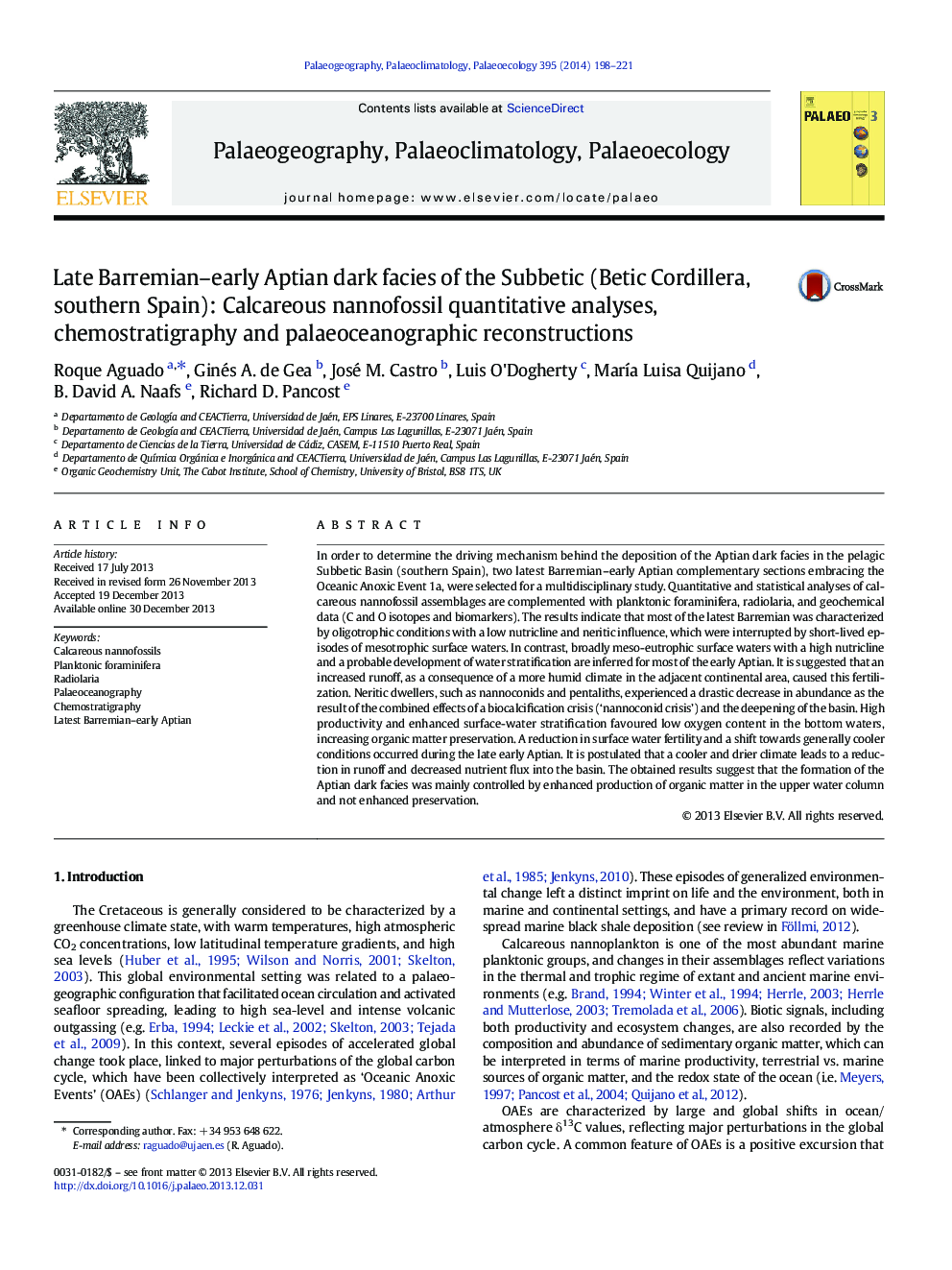| کد مقاله | کد نشریه | سال انتشار | مقاله انگلیسی | نسخه تمام متن |
|---|---|---|---|---|
| 4466398 | 1622195 | 2014 | 24 صفحه PDF | دانلود رایگان |

• Upper Barremian–Lower Aptian dark facies of the Subbetic Basin (southern Spain)
• Quantitative analysis of nannofossil assemblages detects fluctuations in abundance.
• Most of the variance in nannofossil assemblages is induced by palaeoceanographic factors.
• Calcareous nannofossil results are compared with other biotic and geochemical data.
• Enhanced production of organic matter was more important than increased preservation.
In order to determine the driving mechanism behind the deposition of the Aptian dark facies in the pelagic Subbetic Basin (southern Spain), two latest Barremian–early Aptian complementary sections embracing the Oceanic Anoxic Event 1a, were selected for a multidisciplinary study. Quantitative and statistical analyses of calcareous nannofossil assemblages are complemented with planktonic foraminifera, radiolaria, and geochemical data (C and O isotopes and biomarkers). The results indicate that most of the latest Barremian was characterized by oligotrophic conditions with a low nutricline and neritic influence, which were interrupted by short-lived episodes of mesotrophic surface waters. In contrast, broadly meso-eutrophic surface waters with a high nutricline and a probable development of water stratification are inferred for most of the early Aptian. It is suggested that an increased runoff, as a consequence of a more humid climate in the adjacent continental area, caused this fertilization. Neritic dwellers, such as nannoconids and pentaliths, experienced a drastic decrease in abundance as the result of the combined effects of a biocalcification crisis (‘nannoconid crisis’) and the deepening of the basin. High productivity and enhanced surface-water stratification favoured low oxygen content in the bottom waters, increasing organic matter preservation. A reduction in surface water fertility and a shift towards generally cooler conditions occurred during the late early Aptian. It is postulated that a cooler and drier climate leads to a reduction in runoff and decreased nutrient flux into the basin. The obtained results suggest that the formation of the Aptian dark facies was mainly controlled by enhanced production of organic matter in the upper water column and not enhanced preservation.
Journal: Palaeogeography, Palaeoclimatology, Palaeoecology - Volume 395, 1 February 2014, Pages 198–221